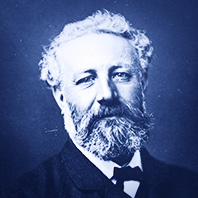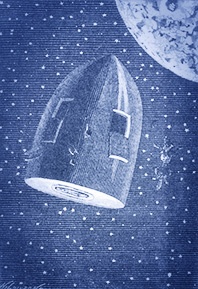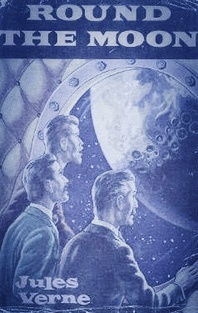Jules Verne’s journeys to the Moon

It is fascinating how the French writer Jules Verne (1828–1905) envisaged the journey to the Moon 100 years in advance in his science fiction novels and was able to put it into words. Admittedly, he was quite taken with describing journeys to unimaginable places: from the deep sea (“20,000 Leagues Under the Sea”), via the circumnavigation of the Earth (“Around the World in 80 Days”) through to the interior of the Earth (“Journey to the Center of the Earth”). Of course, space had to be part of this and this is how Jules Verne firstly wrote the novel “From the Earth to the Moon” (»De la Terre à la Lune«, 1865) and then later the sequel “Around the Moon” (»Autour de la Lune«, 1870).

One has to bear in mind that society went through sustainable changes starting in 1850 into the Machine Age, faith in technology was huge and its possibilities were deemed as immeasurable. In this respect, it came natural to a science fiction author to accomplish things with machines, which would push the boundaries of the imaginable. Still, one needs a lot of fantasy and imagination to form such a vision. Everyone can comprehend this, if trying to imagine something that is currently not possible.
In the novel “From the Earth to the Moon”, preparations of the Moon journey are being described. A giant canon of 300 yards in length and 68,000 tons in weight is built to transport a vessel with three astronauts and two dogs to the Moon. After some attempts and diverse complications, the launch is successful, but the projectile misses the Moon and goes around it.

The journey itself, is then described in the sequel novel “Around the Moon”. The crew experiences some thrilling moments (like for example the weightlessness, problems with the oxygen dosage or the phenomenon of the deceased dog that was thrown into space, flying now along the space capsule) up until the capsule picks up their course to the Earth and lands in the Pacific Ocean.
It becomes apparent that Jules Verne obtained comprehensive information according to the scientific knowledge of back then. He describes in the novel in details the origin of the Moon, writes about the lunar maria and about selenography. A lot of this is congruent with current knowledge and gives the story a high degree of authenticity.
Jules Verne looked far ahead and hence outlined our path. If we all thought a little bit more of the “impossible”, many dreams could come true.

“If we all thought a little bit more of the “impossible”, many dreams could come true.” Indeed.
we will learn from the past to take us into the future!!!peace will bring us together!!!